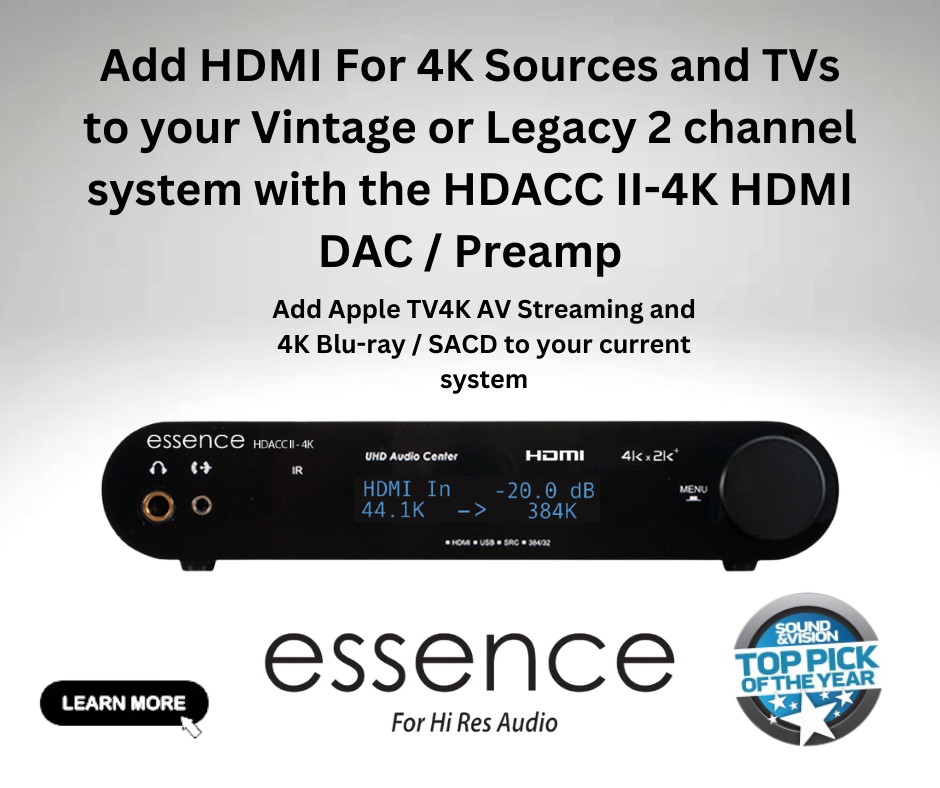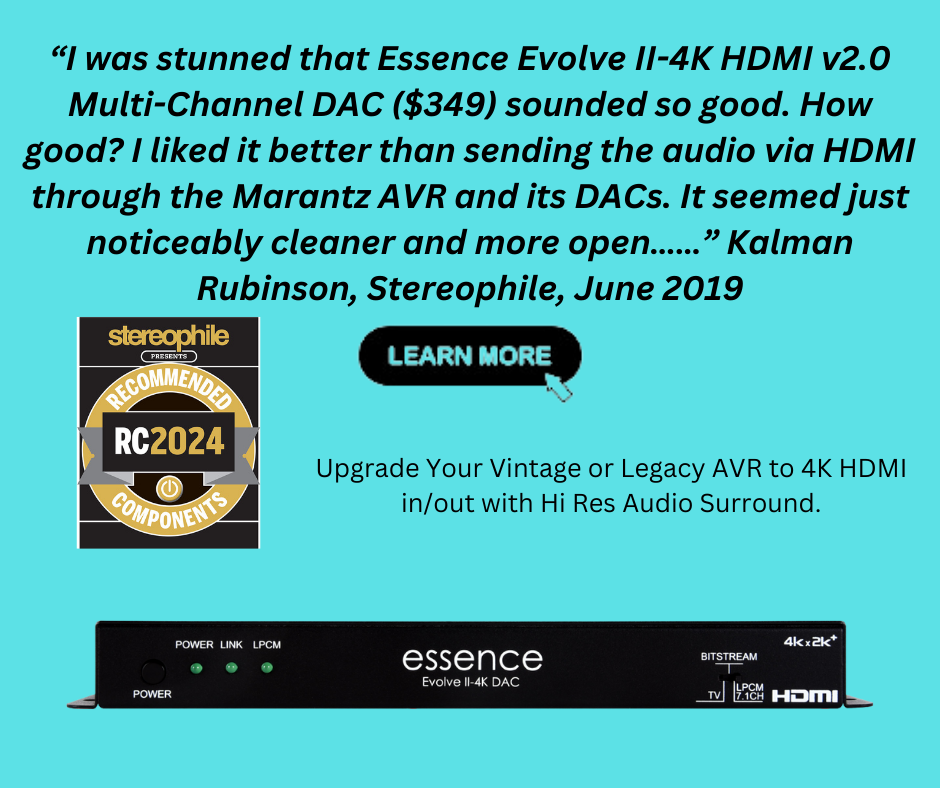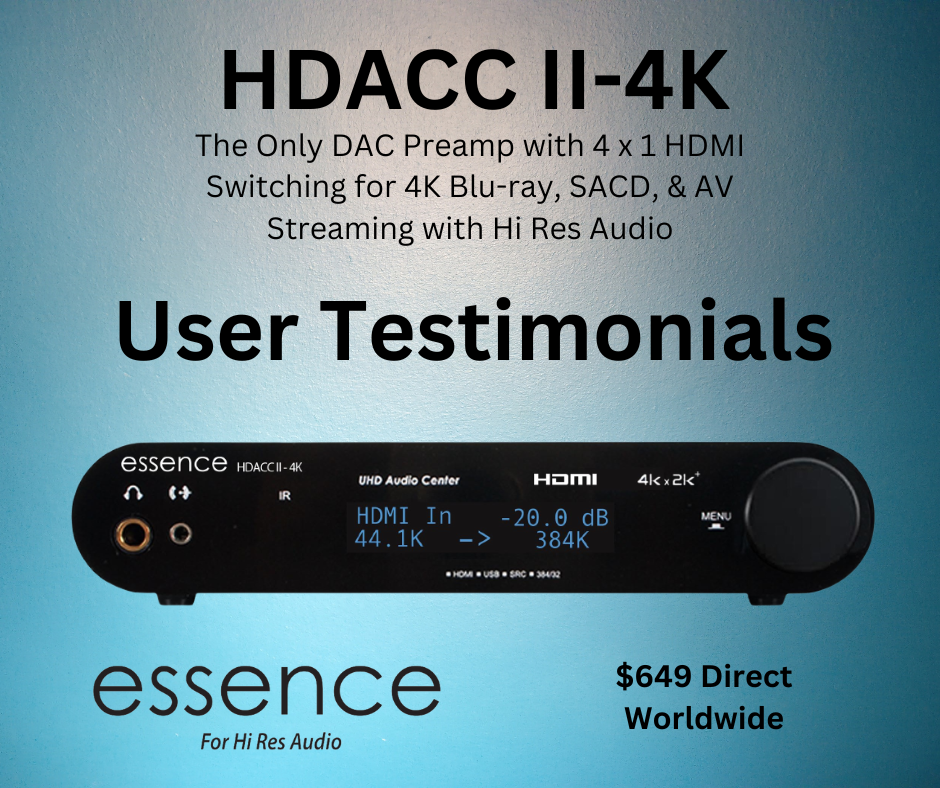Bob Rapoport
Music Reviewer
Thread Starter
- Joined
- Jan 29, 2018
- Posts
- 31
More
- Preamp, Processor or Receiver
- Essence HDACC II-4K
- Main Amp
- Essence DPA-440
- Universal / Blu-ray / CD Player
- Sony 4K
- Front Speakers
- Essence Electrostats
- Center Channel Speaker
- Essence
- Surround Speakers
- Essence
- Subwoofers
- Essence
- Screen
- Screen Goo painted screen, 4 coats
- Video Display Device
- Vizio M70
- Remote Control
- Essence
Originally posted September 2015. Its holds up pretty well after 10 years.
The other day I noticed a posting on one of my favorite Facebook communities, All Things Music, Movies, and Home Theater. A regular contributor posted this Music Resolution Comparison Chart that shows all the various resolutions of digital audio from the lowest MP3 to the highest LPCM and DSD. One person’s comment really struck me as revealing, he asked “what does this mean?” The answer is pretty simple, as you go up in resolution, you can play back at higher SPL with absolute clarity, to the point where today we can hear a one-to-one copy of the original master recording at home, what I like to call the “holy grail of high fidelity”. Click on the chart for the rest of the story.

The other day I noticed a posting on one of my favorite Facebook communities, All Things Music, Movies, and Home Theater. A regular contributor posted this Music Resolution Comparison Chart that shows all the various resolutions of digital audio from the lowest MP3 to the highest LPCM and DSD. One person’s comment really struck me as revealing, he asked “what does this mean?” The answer is pretty simple, as you go up in resolution, you can play back at higher SPL with absolute clarity, to the point where today we can hear a one-to-one copy of the original master recording at home, what I like to call the “holy grail of high fidelity”. Click on the chart for the rest of the story.










